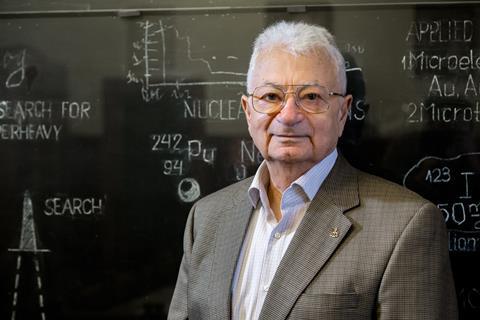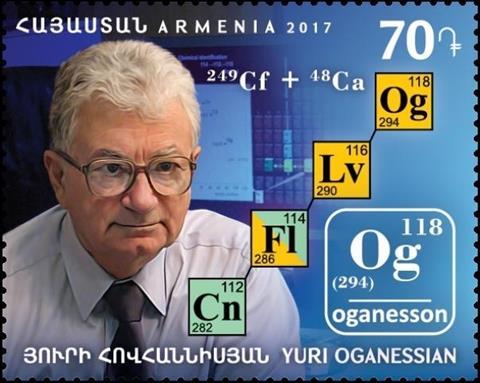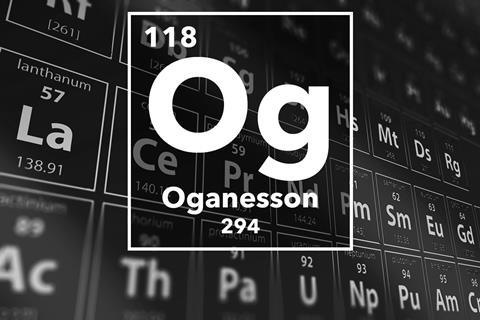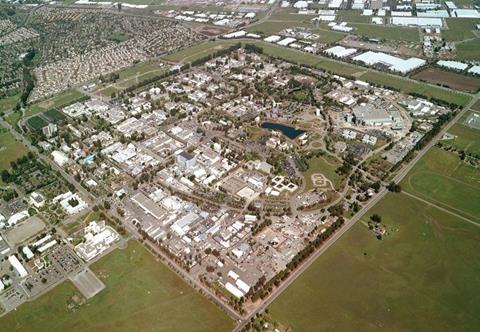Ben Valsler
So this is it, with Kit Chapman as our guide through the superheavies, we’ve scaled the highest peak of the periodic table, landing on the enormous element 118, oganesson.
Yuri Oganessian
I’m Yuri Oganessian. I’m a physicist, and in this laboratory I’m the scientific director – I’m responsible for the scientific programme of the laboratory. We have three different programmes of research, one of them is heavy element research. My own interest is heavy and superheavy element research, and I’ve been doing that practically all my life!
First of all, after university, when I come in the lab, I came to the group of professor Flerov, so the interests of the group were not defined by me but by Flerov, who was head of the group. But when we started to do that, it is not only just the properties of the element. It is also nuclear reaction, nuclear interaction, type of decay, nuclear fission, alpha emission and so on and so on. Actually the wide field of nuclear physics – and chemistry of course! It looks, for me, very interesting and I continued that, I didn’t change the area of the research. I am still interested.

Kit Chapman
That’s the voice of a scientist whose name will be remembered forever. Since he joined Flerov’s team at the Joint Institute for Nuclear Research in 1958, Yuri Oganessian, a Russian-born scientist of Armenian descent, has been one of the field leaders when it comes to element discovery. In the 1970s, he was the first to try the cold fusion technique that would lead to the discovery of elements 107 to 113. In the 1990s, it was his hot fusion that expanded the periodic table to complete its seventh row.
But the element that bears his name, element 118, oganesson, almost went to someone else. In 1999, a team at Lawrence Berkeley National Laboratory claimed to have made oganesson by firing krypton into lead. When other teams failed to replicate the results, the claim came under scrutiny. It didn’t take long to find out what happened. In 2002, the claim was retracted by all but one of the authors: Victor Ninov. The lab found that Ninov had fabricated results; re-examination of his earlier work, at GSI in Darmstadt, Germany, showed that original data had been altered there, too. The Ninov scandal rocked element discovery – but the world wouldn’t have to wait long for the real element 118 to emerge.

Oganessian’s team, working with Lawrence Livermore National Laboratory, fired calcium into a californium target. The first sign of the element came in 2002, although the announcement was delayed until 2005 just to be sure. Even so, the evidence was not enough to convince IUPAC, the international body in charge of chemistry.
Then, in 2012, while the team was firing calcium at a berkelium target to make element 117, fate struck. Berkelium has a very short half-life, and some had decayed into californium. To their surprize, the team made element 118, its half-life of under 0.2 seconds causing it to decay into livermorium, then flerovium, and finally copernicium. It was the smoking gun the team needed to prove the element had been created.
The naming of the element in his honour, decided by his friends and co-workers, has skyrocketed Yuri Oganessian to the world stage. In 2017, Armenia recognised him with stamps in his honour. They all bear the oganesson to coperncium discovery chain that confirmed the last element in the seventh row of the periodic table.
But what does Oganessian himself make of all of the attention?
Yuri Oganessian
Phew… it is difficult to say because it’s a proposal from my collaborators, you know? We work in collaboration with American colleagues – [Lawrence] Livermore National Laboratory, Oak Ridge National Laboratory, Vanderbilt university, Knoxville university, Texas A&M university – all these people were involved in this. They came to this conclusion after all six elements which we synthesised, to give to me. Of course, I mean, it is a great honour for me, if my friends, my colleagues want to express this opinion. I’m still not in a suitable position, in suitable form to say more than that to say more than that! I’m just looking and there’s a lot of things to do! It’s not the final stop, the finish of the story. We may have to go far.

Ben Valsler
That was Yuri Oganessian, clearly hopeful that we can continue to expand the periodic table. And when we do, we’ll update this podcast series again. But until then, we’ll continue out into chemical space, examining the results of combining elements as we study a new compound each week. Next week we’re joined by Kat Arney for the biological pigment that links sun tans, squid ink and brown bananas – melanin.
Kat Arney
Dark skin and hair are rich in eumelanin, but pale skin and blond hair have only a smattering while albino people lack melanin altogether. Adding a dash of phaeomelanin into the mix results in strawberry blonde hair, and a big dose is responsible for fiery red.
Ben Valsler
Find out more with Kat next week. Until then, please let us know what compounds we should cover – email chemistryworld@rsc.org or tweet @chemistryworld. As always, thanks for joining us, I’m Ben Valsler.
Ununoctium
Our original podcast on elements 116 and 118, by Andrea Sella, was written long before oganesson had been named. We've saved it here for posterity:
This podcast was originally written to include elements 116 and 118. Since this podcast was first published, the names of these elements have been ratified by the International Union of Pure and Applied Chemistry (Iupac). Element 116 is now called livermorium (symbol Lv) in honour of the Lawrence Livermore National Laboratory in California, home of the US end of the collaborative team and a stalwart of nuclear and heavy-element research; element 118 has been named oganesson (Og) after its discoverer, Yuri Oganessian.
Meera Senthilingam
This week the chemist's that are seeking fame. Here's Andrea Sella
Andrea Sella
We live in an age when everyone is just gagging to be 'famous'. Andy Warhol, of course, pointed out that everyone was likely to be famous for 15 minutes. But the real question is, if you're a chemist, or a scientist generally, what does it take to become famous? How do earn the adulation of the masses? And if not the masses, at least of your peers?
You'd think a Nobel prize would do it. But you'd be surprised how few of them anyone can actually remember, apart from a few early 20th century heroes. And to have an element named after you need to be dead. So that seems quite pointless.

What if you discovered a new element? For about 70 years, ever since plutonium slipped out of a nuclear reaction, the search has been on to make ever heavier and more exotic elements to add to our periodic table. And I emphasise the word 'make' because it is no longer a question of finding a rock and extracting from it some mysterious substance that does not fit the description of anything that has come before. No, you actually have to make it from scratch.
So how do you make an element? Well new atoms of, admittedly old, elements, are being made all the time. Nuclear fusion of hydrogen is the fundamental process that powers stars. But as stars age and steadily run out of hydrogen they gradually start fusing heavier nuclei and it is then possible to make ever heavier atoms. It's brutally difficult because you have to get past the huge positive charges of the two nuclei to get them to fuse. Stars can do this nucleosynthesis up to iron. Unfortunately that's where things end.
After that the way to make anything heavier is by adding neutrons. Because the neutron has no charge it can sneak quietly into the nucleus. The neutron can then add to the total mass count, and the nucleus can then decay by spitting out an electron to give you something that is one place higher along in the periodic table. And repeating this process laboriously – one step forward, one step back – will take you all the way out towards uranium, which at atomic number 92 is about as high as one can find lying around in universe.
But can one go beyond? The answer turns out to be yes. Teams in the US, Germany, Japan and Russia have been hard at work doing it. And the process is incredibly difficult. Essentially what they do is strip atoms down to their nuclei and then accelerate them to phenomenal speeds using a particle accelerator, and then slam these ions into a target. So for example the element lawrencium was made by bashing a californium target with naked boron nuclei.
This is not work for the lone experimenter working in a shed somewhere. These are experiments of extraordinary subtlety and complexity. And the problem is not just making the new element but also figuring out what you've got at the end. The problem is that you only make a few atoms at a time and these products tend to be spectacularly unstable so you sometimes have only a few milliseconds in which to work out what you've got. It's complex. It's expensive. And very, very clever. And each new atom really is a whole new chemical world to explore. Can it be any wonder that it attracts fortune seekers?

In June 1999 the Lawrence Berkeley Lab in California, one of the few places in the world that does this sort of work announced in the journalPhysical Review Letters that they had succeeded in making ununhexium and ununoctium, which in plain English means elements 116 and 118, by bashing a lead target with krypton nuclei. Huge excitement followed because these were by far the heaviest elements ever made. It seemed a real breakthrough. The method they had used was also a departure from previous work - a new strategy that had gone spectacularly well. The secretary of energy, whose department had funded the work noted that four of the senior members of the team were foreign said 'this stunning discovery which opens the door to further insights into the structure of the atomic nucleus also underscores the value of foreign visitors and what the country would lose if there were a moratorium on foreign visitors at our national labs. Scientific excellence doesn't recognise national boundaries, and we will damage our ability to perform world-class science if we cut off our laboratories from the rest of the world.'
The problem was however, that no one else could repeat the work. Labs in Germany and Russia reported that they got different results. A major process of soul-searching started in California and the data began to be picked over in great detail. A painful investigation concluded that one of the team leaders Victor Ninov, a Bulgarian national, had fabricated the crucial data. Confronted with the evidence, Ninov denied everything. But in Germany, irregularities came to light in the data associated with an earlier discovery he had been involved with – that of elements 111 and 112. Ninov was fired. The Berkeley led group were then forced to do the unthinkable – to publish a retraction, the author list being one name shorter than the original paper. It was the scientific equivalent of hara kiri.
But did element 116 really not exist? In 2000, the rival group in Russia reported having made a single atom of element 116 and within 3 years had succeeded in making more atoms of two different isotopes of this element. 118, on the other hand, had to wait until 2002 for successful synthesis by a route that differed from that used by the Americans. So 116 and 118 are real, and their properties are slowly being mapped out even as we speak. But does anyone remember the names of the people who are the rightful discoverers? Does the name Oganessian ring a bell? Probably not.
It's more likely that you remember the name of Victor Ninov, the man at the centre of the storm. Perverse, isn't it? But it's the way of the world. Fame, even in science, is a fickle mistress.
Meera Senthilingam
Perhaps the net aim then, rather than finding an element could be to find a way to preserve these legacies. Just a thought. That was University College London's Andrea Sella with the fundamental, not famous, chemistry of elements 116 and 118. Now next week a two faced element.
David Read
Sodium, like most elements in the periodic table could be said to have a dual personality. On one side it is an essential nutrient for most living things, and yet, due to its reactive nature is also capable of wreaking havoc if you happen to combine it with something you shouldn't. As such sodium is found naturally only in compounds and never as the free element. Even so it is highly abundant, accounting for around 2.6 per cent of the Earth's crust by weight.
Meera Senthilingam
And to find out some of the beneficial, as well as lethal roles of sodium – as well as the mystery behind it being given the symbol Na, join David Read from the University of Southampton in next week's Chemistry in its element.













No comments yet